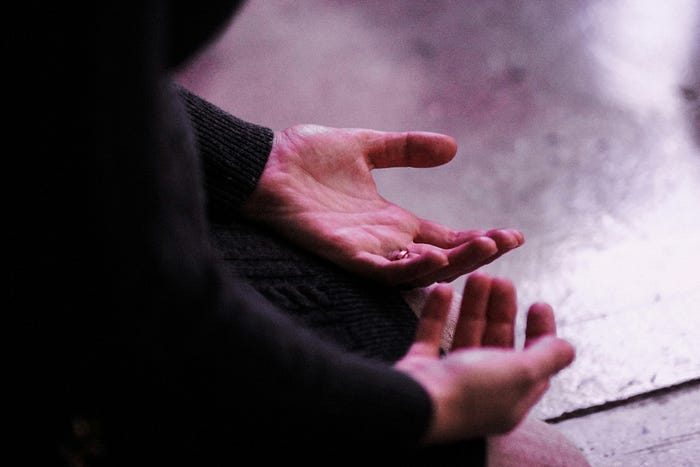Slow Breathing Goes By Another Name — Prayer
Prayer has its roots in every culture and tradition around the world but what often gets missed is the need for a controlled breath
I used to think praying was for losers. Desperate people pleading to a man in the sky who never listened.
Today I see it differently.
It’s an act of integrity. Or a way of setting an intention, having a moment of humility, or creating an opportunity to slow the breath down and still the mind.
This turnaround happened years ago when I was training to become a Kundalini yoga teacher. During those three months, I felt the power of prayer and the presence of spirit through movement and chanting.
It re-programmed my mind to see prayer as something other than a religious act. It became a place where I could connect with the divine and commune with spirit and both transcended the religious dogma I had long dismissed.
Helping the breath find its voice
Chanting is one of my favourite ways to pray.
For reasons still unknown, however, it’s easier to make a sound longer than it is to breathe out normally. So, we can make sounds or tones to prolong our exhales.
Prolonging our exhales has a number of benefits that include:
Smooth digestion
Lower blood pressure
Balanced nervous system
Higher volumes of oxygen absorbed into tissues and cells
More available energy
Clearer thinking
Balanced hormone levels
Reduced stress levels
With this in mind, it should be no surprise that many religions and spiritual practices have some form of chanting that accompanies their rituals and prayers. Christians sing hymns. Hindus and Sikhs chant mantras. Buddhists and Jews recite prayers. And on and on it goes. What they all have in common is that before a hymn, mantra, or prayer, there is a short inhale followed by a long exhale and many syllables or tones last 10–20 seconds or more. They are then repeated for minutes at a time. This drops people down to 3–4 breaths a minute which generates feelings of peace, harmony, and joy. This, along with a sense of devotion, is the foundation for a spiritual experience.
Sadly, the breath’s role in facilitating such an event is often overlooked.
The best things in life are free
One of the biggest lessons I learned from Kundalini yoga was that three of the most energising and uplifting things in life — the breath, sound, and movement — are free.
Another one is the act of prayer.
What I know now is that prayer can look and sound a million different ways for a million different people. It certainly doesn’t mean sitting beneath a cross, hands in prayer position, and whispering some wish or desire to a holy figure in the heavens above.
There’s nothing wrong with that but there are other ways too.
So, prayer can be experienced in the joy of dancing, singing, laughing, lovemaking, swimming, breathing, hugging, witnessing, and contemplating life. It can be in the stillness and chaos of everyday happenings or in the madness of rage and the utter joy of gratitude.
There’s no right or wrong here. That’s the joy of being human.
“If you only say one prayer in a day make it thank you” — Rumi
The only thing I’d like to add to that is that if you’re feeling extra joyful you can even chant it :)
Talking of chanting, below is one of my favourite daily devotional practices that’s as old as time.
The Sacred Sound of Aum (Om)
Putting it into practice:
1 breath = 16 seconds
Breathe in for 4 seconds
Breathe out for 12 seconds
Breathe in through your nose for 4 seconds
Then begin to exhale with the sound of Aaaah for 4 seconds
Continue exhaling for another 4 seconds but with the sound Ooooh
Continue exhaling for another 4 seconds but with the sound of Ummmm
(Total exhalation time = 12 seconds)Then inhale for 4 seconds and repeat
If you want to deepen the experience, extend each exhalation to 6–8 seconds. So, the total exhalation time will be 24 or 32 seconds instead (4 second inhale + 6–8 seconds for each sound.)
Thanks for reading!
See you next week :)




Dear, Andy Murphy. This article touched me in a profound way. I, too rejected the dogma of the religion my childhood. Only to go back to church years later. It was the music. Community singing. I have since stopped going to church. Their rules are not in line with my values. The songs stay in my head tho. Now I will incorporate chanting into my daily life.
Thank you for a well written article. One that makes me think 🤔.
With much respect, HELENLOUISE J.